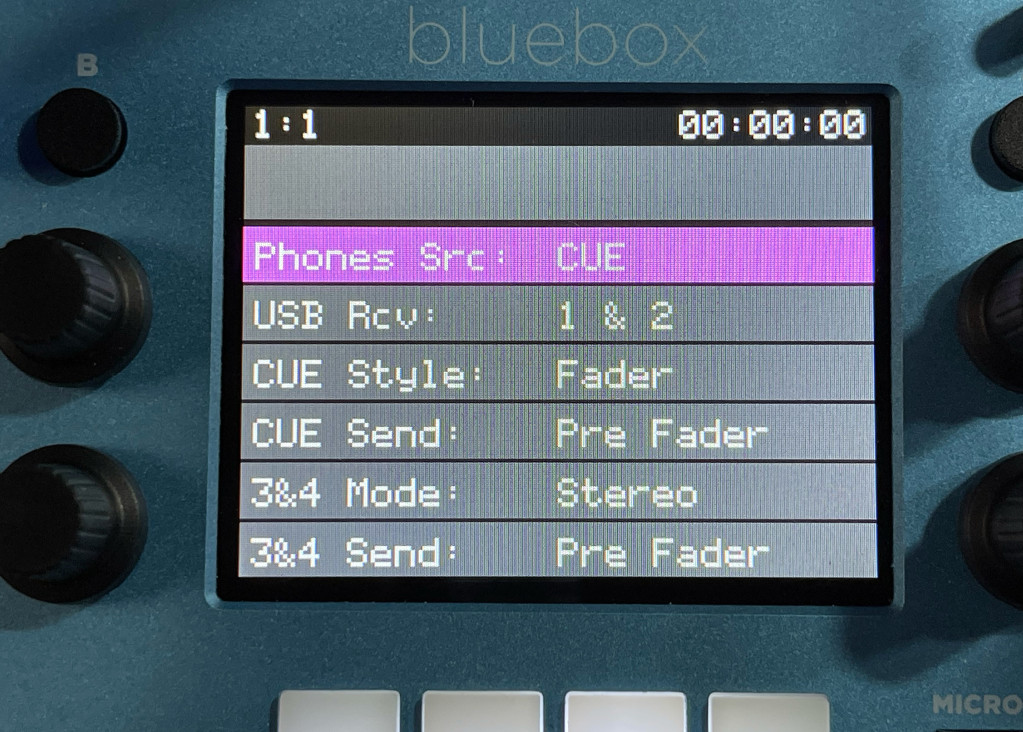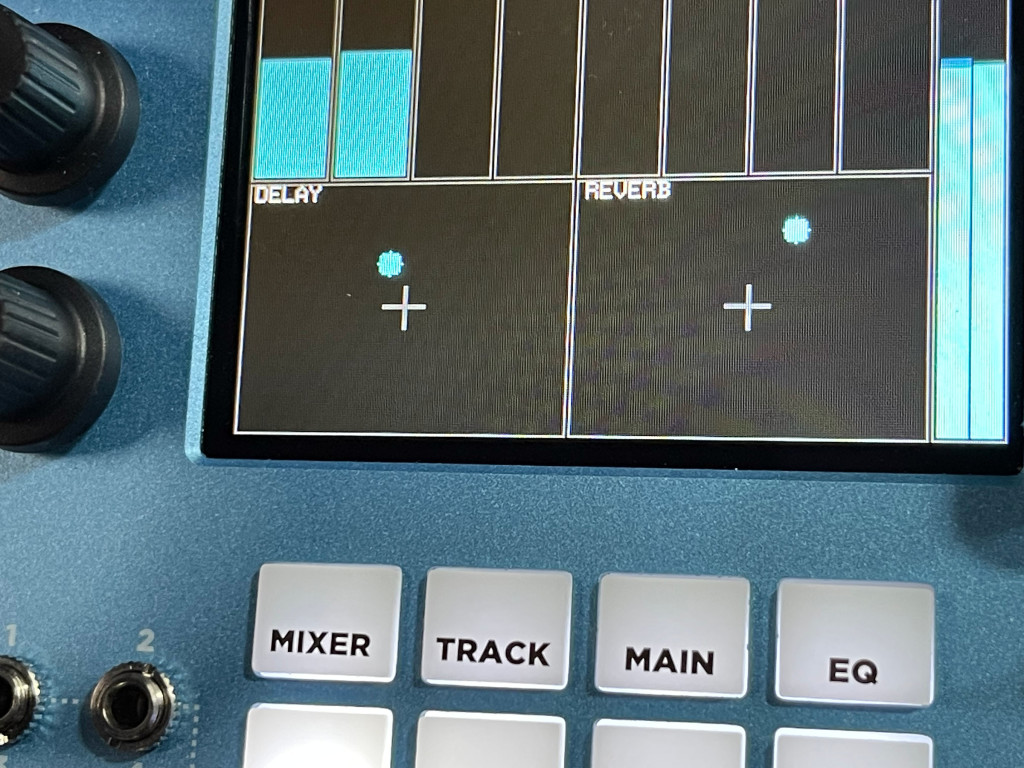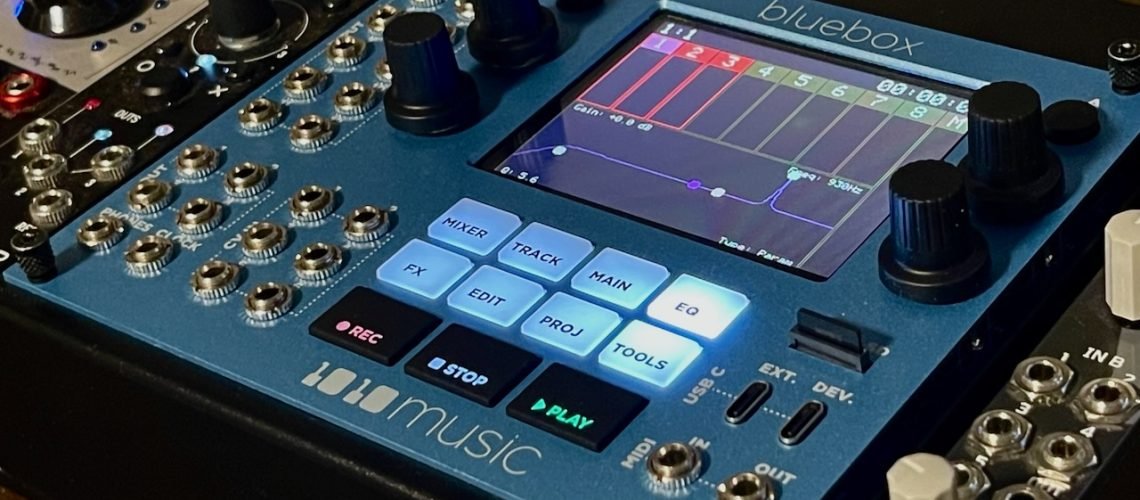We already found 1010music’s bluebox a musically inspiring combination of mixer, multitrack recorder/player, and effects. The leap to Eurorack has opened up even greater potential, producing this $699 multitasker.

Just taking the bluebox and putting it in Eurorack form would have been appealing to some already. But on top of adding six CV inputs you can use for modulation and control, the bluebox Eurorack edition also adds two USB-C ports, turning it into more of a hardware hub. (See the connectivity section below.)
You still might want to go back and read Andreas Roman’s poetic review for CDM from 2020, which covered not just what the box does on a technical level, but how he applied that to developing musical ideas:
The bluebox has grown slightly in its Eurorack form, accommodating all its I/O on the front panel and keeping the distinctive touchscreen, encoders, and push buttons. It still fits into 30 HP, though – and only slightly bumps the price up, to $699.
Now we also get to view it in context of a very different mixer, the Xer Mixa from Noise Engineering, which I also reviewed in detail this week. 1010music’s box is digital and centers on the touchscreen whereas the Xer Mixa is all about analog and physical faders. 1010music is also a multitrack player and recorder and effects box; the Xer Mixa focuses more on routing and analog control and works as a VCA.
So, what makes the bluebox special – and is it really the mixer and audio tool you want in your rig?
bluebox gone Eurorack: form factor, connectivity
1010music’s cute little boxes make nice companions to Eurorack gear even without necessarily getting the one you bolt into the rack – especially thanks to their compact size. But the company has done an excellent job of making some Eurorack conversions, like adapting the Bitbox Micro to CV control and Eurorack format.
The bluebox Eurorack Edition is exactly as it sounds – it’s the desktop hardware and all of its functionality, adapted to this format. That puts a ton of power into the rack beyond what much of the analog-focused competition might offer, because this is really several devices in one.

- Mixer: 12 mono / 6 stereo tracks.
- Multitrack player/recorder: Record and playback stereo and multitrack files, with basic editing, even playing back and recording tracks simultaneously.
- Multi-effects: Reverb and Delay sends, plus four-band parametric EQ per track and global compressor.
- Snapshot saving so you can save/recall all parameters with projects.
- USB audio interface: Send and receive 2-channel audio from your computer.
- MIDI and USB MIDI: Send and receive clock and receive MIDI control messages via either TRS minijack MIDI or USB-C (the dev port).
- microSD for storage – so gobs of space for recording and playback and project save and recall.
This is all shipped in a handsome, easy-to-use design with a bright, clear, responsive touchscreen, nice-feeling buttons, and big, smooth encoders. I have just one major annoyance to point out: the white silkscreen on the powder blue background is hard to see in a lot of lighting situations.

This is really several devices in one.
And you get flexible I/O. On the input side, you can configure up to 12 mono inputs or 6 stereo inputs or any combination – meaning you actually get a little more input flexibility out of this unassuming box than even the sprawling Noise Engineering module. You can simultaneously configure how many tracks and input channels you want and whether you want them displayed as two rows (with wider channel strips) or a single row — each per project.
Output I/O is flexible, as well. 1&2 always include the effects sends. 3&4 can be an aux out, or they can be retained as a dry copy of outs 1&2 – so you can have one version with effects and one without. This isn’t really a quad device (you’ll have to contend with panning), but you could certainly use 3&4 to create simple quadraphonic setups.
There’s a configurable headphones output, too – either for the main mix or, if you want, a cue. (Thank you!)

Workflow
1010’s touchscreen is very usable, with lots of visual feedback and ample consideration to leaving enough space for your fingers. But for precise control, you’ll always want encoders. The encoders always have mapping from left to right onscreen, then top to bottom, left to right on the four encoders. On screens with more than four parameters, the A button toggles between them.
The A and B buttons can get slightly confusing: B (on the left) brings up settings screens, but not all screens have both buttons active. That is the price for this much functionality in a small space; you do have to contend with a little bit of switching, though thankfully 1010music has kept it to a minimum. I’d just like to see more screens populated with more tweakable controls or additional settings, so that the two buttons always did something. Maybe it suggests some room for more functionality in a firmware update (fingers crossed, 1010).
And because this is a digital setup with a touchscreen, you can label all your tracks with a handy onscreen keyboard. It’s simply dazzling to have the kind of control and project recall you have for a big digital mixer with this little box – all the more so in Eurorack, where you often shuffle around different use cases.
As I hadn’t used the bluebox previously, I was also pleasantly surprised by how convenient it was to have a mixer that was also a multitrack recorder. You don’t have to do any additional configuration; tap the tracks you want to record (master or individual stems), hit REC to arm recording, and then PLAY and you’re set to go. It’s perfect for capturing ideas and means you can mess with the stems later if you want.
Clocking is fairly convenient, too, although there’s only an analog clock out – for receiving clock, you’re restricted to MIDI, which is a bit annoying in a Eurorack box.
Having the USB connection also makes this ideally suited to working with a computer, though it is just a stereo device. Generally, you ignore the computer (maybe a good idea if you’re invested in Eurorack), save your stems, and can go back and work with them in your DAW later on.

Effects and processing
The effects functionality of the bluebox looks basic on paper, but it’s a joy to use – there’s a lot there.
The reverb is the stand-out, with multiple models and modes, time, high and low frequency cutoffs, predelay, and freeze. There are a ton of models: Tight Ambience, Bright Room, Large Room, Wide Slap, Notchy Ambiance, Reso Room, Marble Hall, Chamber, Dark Hall, Small Hall, Gated, Arena, Long Bright Bloom, Gravitas, and Clouds. It’s enough to consider the bluebox as a reverb addition to your rig alone.
The delay has with feedback, beat sync, filter (bandpass) with cutoff and width and ping (for ping-pong stereo operation). On the delay side, I wish there were more modes – maybe a tape delay or mid/side operation, for instance – and accordingly, the B button here doesn’t do anything. The delay is nice enough; it just isn’t as full-featured as the reverb.
Both the A and B sends also have X/Y screens, turning the bluebox into a kind of KAOSS Pad, too.

But also don’t forget the four-band EQ. Each band has multiple modes (low and high cut, low and high shelf, and parametric), plus Q. There’s no live spectral view or something fancy, but it’s still powerful, and I wound up using it unexpectedly as a creative filter in the track we made – the added advantage of having this in your Eurorack rig.
There’s also a very solid master bus compressor, with lookahead, autorelease, Peak + RMS + Expander modes, and wet/dry.

CV control
As on the Noise Engineering box, part of the big appeal of working with the bluebox is having flexible, assignable CV inputs. 1010music have devised some really clever ways of doing this. You can choose CV Map and pick parameters to map and touch. Or you can perform a “learn” style operation, turning the knob you want. Essentially everything is assignable. It’s unprecedented how easy it is to map control over mixing and effects via CV.
The one difference versus the Xer Mixa is, everything – MIDI and CV – is one-to-one, not many-to-one or one-to-many as on Noise Engineering’s offering. I think that makes sense in context, but it does represent a different approach to modulation; the bluebox is more about DAW-style control to the analog Xer Mixa’s more open-ended modulation.
It’s unprecedented how easy it is to map control over mixing and effects via CV.
In use
Once again, I headed to Florian Meindl’s studio to put the bluebox to the test with a wide variety of gear. This time, we mixed and matched live inputs and modules. Honestly, I was surprised to find that the low-noise, high-headroom bluebox accommodated all those inputs without me putting in much thought, though you could use a separate module for translating between line and Eurorack level if you really wanted.
Here’s fiddling with the controls. (Don’t worry, I did adjust the balance. I’m, uh, demonstrating clipping.)
This is a terrifically convenient device, and having CV control and effects meant more creative possibilities, too. The feature I expected to use most – having multitrack stems – wound up being partly unnecessary, just because you carefully adjusted balance and added effects the first time. That meant those elements of the track were done the moment we hit record.
There are many other use cases I didn’t wind up using, but which I know would be useful in some live situations. The bluebox is a one-stop shop for stems and audio playback, meaning an additional source of sounds to be processed with other tools. It’s not a sampler, of course, but in addition to conventional backing tracks, the simultaneous playback/record feature means you have an always-ready sound source – and can still record your live sets at the same time.
Why this track turned into an electro track versus the techno track we made with the Xer Mixa I’ll leave you to decide. The result – Mintropolis, out now on FLASH Recordings:
Some notes on modules: the main sound here is a Moog Music DFAM, with crunchy clap-ish percussion again from Timo Rozendal’s amazing YM2413 chip-based FMP, fed through the WireMechanics SPICES module.
Conclusions
It’s tough to imagine many devices more useful as the bluebox Eurorack Edition. Apart from CV control, the USB-C addition is one I would hope comes to a revised desktop version. But it’s easy to choose this one, even if you buy a cheap skiff to house it and tote it around the way you would the desktop version (though check the power requirements there).
The combination of mixing, multitrack playback/recording, reverb, delay, per-channel EQ, master compression, and all this connectivity is clearly a winner. That said, the same advantage of this box – configuration and recall of different mix settings and expansive mix functionality – mean that it’s not your choice for hands-on mixing. But if your live setup is about recalling a pre-configured setting and tweaking everything else, it’ll suit that use case well, too.
1010music in general deserves some real credit for the quality and diversity of gear they’re putting out, easily standing toe to toe with much bigger names. And can this allow you to leave the DAW at home? Absolutely. It might even inspire more collaborations, because of the ease of showing up at someone’s studio and grabbing ideas from desktop and modular/analog gear alike.
Check my other big Eurorack mixer review this week:




